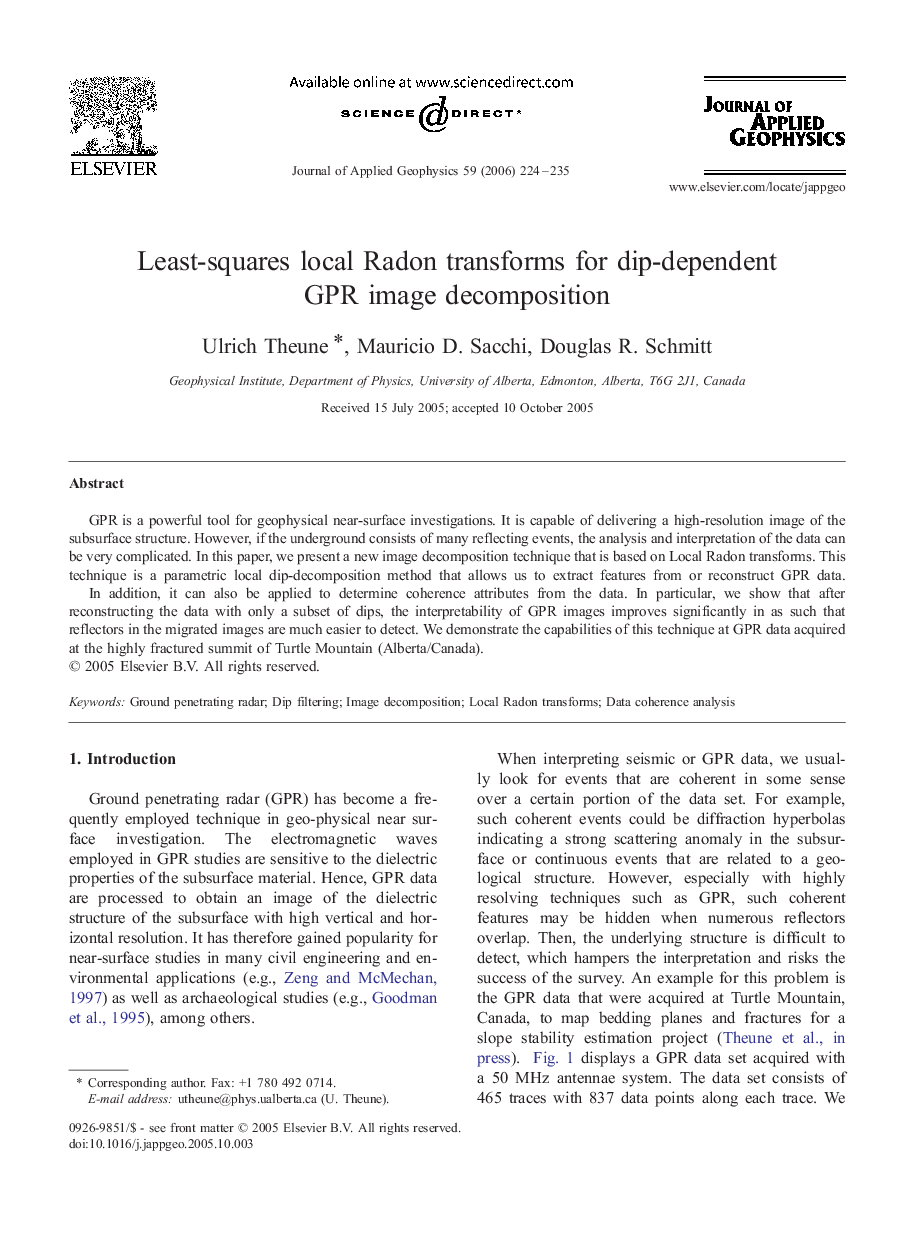| Article ID | Journal | Published Year | Pages | File Type |
|---|---|---|---|---|
| 4741180 | Journal of Applied Geophysics | 2006 | 12 Pages |
GPR is a powerful tool for geophysical near-surface investigations. It is capable of delivering a high-resolution image of the subsurface structure. However, if the underground consists of many reflecting events, the analysis and interpretation of the data can be very complicated. In this paper, we present a new image decomposition technique that is based on Local Radon transforms. This technique is a parametric local dip-decomposition method that allows us to extract features from or reconstruct GPR data.In addition, it can also be applied to determine coherence attributes from the data. In particular, we show that after reconstructing the data with only a subset of dips, the interpretability of GPR images improves significantly in as such that reflectors in the migrated images are much easier to detect. We demonstrate the capabilities of this technique at GPR data acquired at the highly fractured summit of Turtle Mountain (Alberta/Canada).
